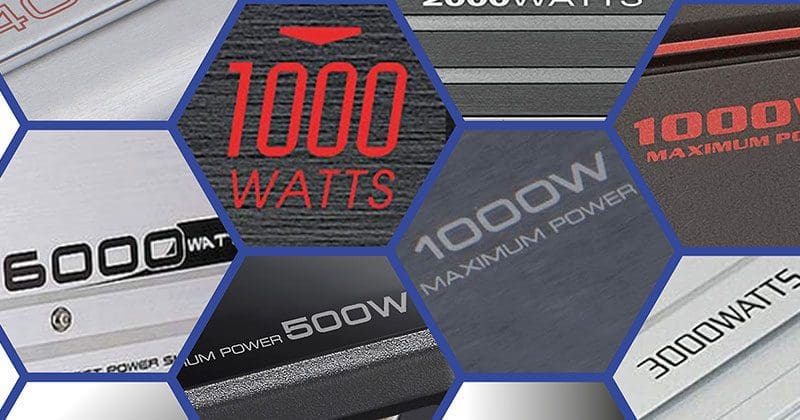When it comes to car audio amplifiers, people often mistake quality with high power ratings. This misperception has led to manufacturers coming up with every angle or trick possible to measure as much power as possible from their designs. Many manufacturers publish both continuous low-distortion specs as well as maximum power ratings. Are the high numbers useful or relevant? Spin up your beanie propeller for a closer look.
How Car Audio Amplifier Power Is Measured
There are lots of wrong ways to measure power from a car audio amp. The worst is to make an assumption about the load impedance of a speaker and measure the voltage being produced by the amp. The voltage measurement is used in a simple equation to supposedly calculate power. The problem is, the impedance of a speaker changes depending on the frequency being played, so the math simply doesn’t work.
An ever-so-slightly better method is to use a voltmeter and an ammeter. These tools are used to measure current and voltage. There are two problems with this method. Most users leave both tools in peak-hold mode and perform math on the resulting numbers. As the voice coil of a subwoofer heats up, its impedance rises and current flow decreases. Maximum current will often be present at the beginning of the measurement, then maximum voltage a few seconds later as the current draw from the amp power supply reduces. The second problem is that voltage and current aren’t in phase through a voice coil because the coil has inductance. This gets into somewhat complicated alternating current theory. Just know that the two measurements have to be taken at the exact same instant – much faster than typical meters can produce – for them to be accurate.
During amplifier development, power is measured with a purely resistive load bank and calculated based on voltage. This provides an accurate lab number, but may not translate perfectly into real-world performance when driving highly reactive loads (woofers with high inductance). That said, the numbers are repeatable and consistent.
For real-world measurements, D’Amore Engineering developed the Amp Dyno AD-1. This rack-mount device not only measures current and voltage simultaneously, it also analyzes the audio signal for distortion and can stop the measurement when it reaches 1%. The handheld AMM-1 Audio Multimeter offers the same functionality in a device that can be used with subwoofers and speakers in a vehicle.

What About Distortion?
Determining how much power is available to drive your speakers needs to take into account distortion in the audio signal. If the amp is pushed into clipping, the power it is producing no longer matches the original waveform. Back around 2004, the Consumer Electronics Association (now called the Consumer Technology Association) developed a standard for car audio amplifier power testing called CEA-2006. The standard specifies the supply voltage to the amp (14.4 volts), the load impedance (4 ohms) and the maximum amount of distortion and noise allowed in the output signal (1% THD+N). Manufacturers can include lower-impedance measurements for subwoofer amplifiers designed to produce maximum power into 1- or 2-ohm loads, but they are to be separated from the CEA-2006 (now called CTA-2006) specification.
What About Maximum Power Ratings?
Maximum power ratings, like those provided with most radios, are basically useless. Let’s look at a high-quality multimedia receiver like the Sony XAV-AX5000. Sony rates the radio as capable of producing 20 watts of power from each of the four channels. Total noise and distortion are below 1%, as per the CTA-2006 specification.

If you were to continue to turn up the volume on the radio past the point that the amp reached 1% distortion, the little amplifier IC would keep trying to produce more voltage. The limiting factor is that the amp can only work with the voltage provided by the battery and alternator – about 13.5 to 14.0V in most cases.
This voltage limit means that the most voltage we can apply to a 4-ohm speaker is about 13 volts from the highest peak to the lowest dip.
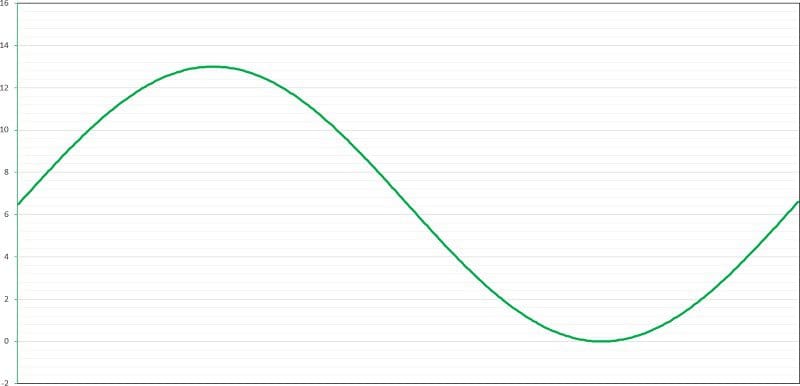
If we push the output to a level that would contain roughly 1% distortion, the result would look similar to the following waveform.
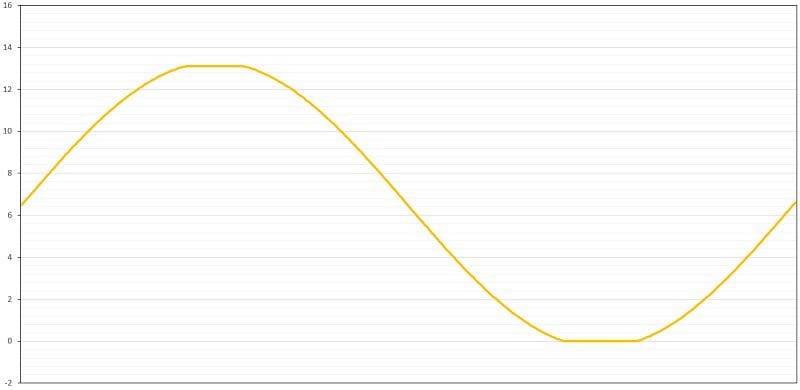
If you were listening to this, you’d start to hear the waveform turn sour because of the addition of unwanted harmonic content.
If we find a way to continue increasing the signal going into the amp, without increasing the maximum voltage the amp can produce, the waveform starts to look like this:
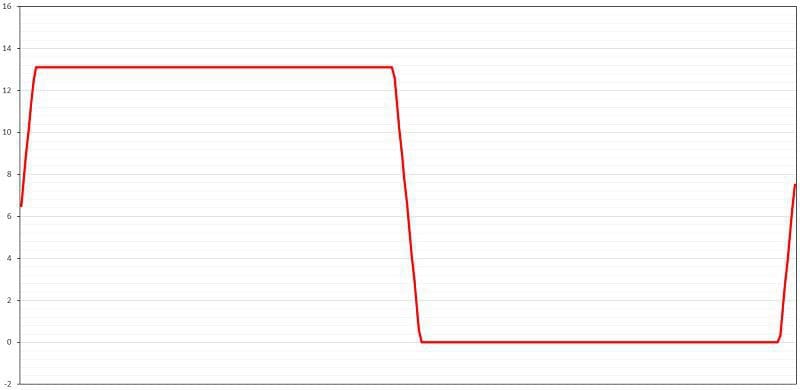
What Is Power?
When looking at the above three waveforms, the power is calculated by analyzing the area under the curve for each half of the waveform. For a pure sine wave with no distortion, the equation is (Peak-to-Peak voltage x 0.707)^2 / R. For our 13-volt peak-to-peak waveform with a nominal resistance of R=4 (a 4-ohm speaker), that works out to 21.12 watts. As we introduce more clipping, the rest of the waveform increases in amplitude. There isn’t a simple formula to calculate power in a distorted waveform. Once we get to a square wave, where the voltage swings from our maximum positive to our maximum negative limits, the formula is (Peak-to-Peak Voltage)^2 / R. For our example, this is 42.5 watts.
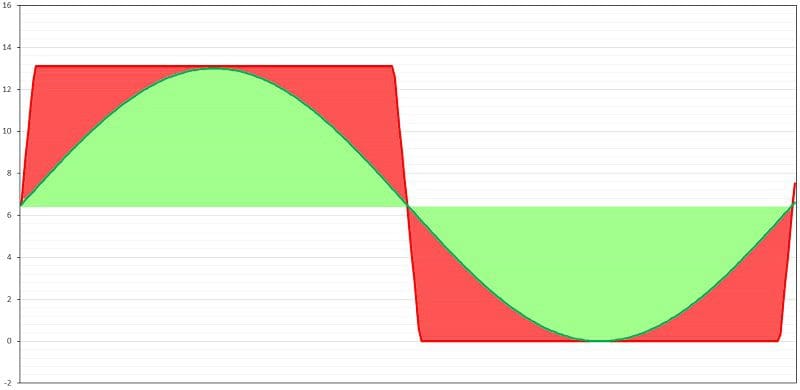
The graph above tells the tale of clean power versus dirty power. Any output signal that falls into the green area should be reproduced accurately and with minimal distortion. Because of the power supply voltage limits of our amplifier IC, we can get more power from the amp, but it will be distorted and sound garbled.
Are Peak Power Ratings of Any Use?
If an amplifier manufacturer wants to publish the largest possible “power” number on an amplifier, and it is capable of producing a square wave output, then the peak power rating should be roughly double that of the RMS, continuous or CTA-2006 compliant rating. Can we use this power to listen to our music? Not really. It sounds terrible. Drop by your local specialty mobile enhancement retailer today and let them help you choose an amplifier that produces the power you want without adding unwanted distortion to the signal.
